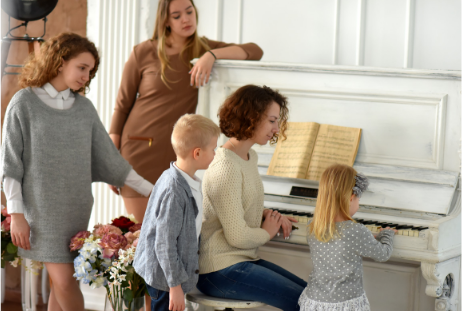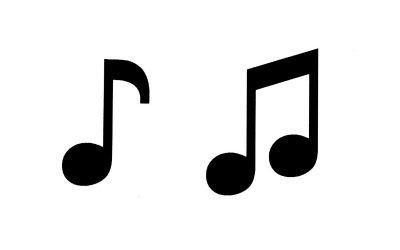facebooktwitterpinterestinstagramyoutubeSinging is one of the easiest ways in which to incorporate music in your homeschool routine. And it is something that can be done every single day without too much hassle. Also singing has one of the biggest advantages, and...

6 ‘Super Cool’ Games To Teach Kids To Read Treble & Bass Clef Notes (Keyboard Required)
6 ‘Super Cool’ Games To Teach Kids To Read Treble & Bass Clef Notes (Keyboard Required)
See below for a Free Printable Pack to go with the post.
Did you know that one of the best ways to ensure that your kids are extremely proficient at reading music notes, is to consistently reinforce the concepts they’ve learned?
So, how do you do that?
Here’s how. You do it with games.
What games?
Read on and I will show you some really cool games you can play with your kids.
I have even included the necessary material with this post, so don’t forget to download it and go so far as laminating it if necessary.
Ready to get started?
Things You Need:
– Dry Erase Marker
– Pebbles/ Coloured Beads/Mini Action Figures/Tokens/Coins/Anything Similar
– Keyboard (doesn’t have to be a piano, can be an electric keyboard with at least 44 keys, black and white notes included).
Games
1. Play a note on the keyboard, ask your child to find it amongst the planet notes and also connect it to the keyboard on the game card. You can play this game in reverse with your child playing the note and you finding it and your child correcting you.
2. Ask your child to pick one type of planet and name all the notes that have been denoted by that planet. Once he’s done that, ask your child to take the game card to the keyboard and play each of those notes denoted by the chosen planet.
3. Team/Racing Demons Variation: Assign a specific planet to each child and ask them to name as many planets in their group in 30 seconds (give them a paper to write it on) and then play it on the keyboard.
4. Play a note on the keyboard. Ask your child to find the note on the stave, connect it to the matching concept and then call out the name.
5. Ask your child to play a note on the keyboard. you find the corresponding note amongst the planets, match it and ask your child to check if you got it right or wrong (Tip: It’s always good to get a few wrong, it’s a confidence booster for kids that mom or dad don’t know as much as they do).
6. Leave a pebble on a note on the stave, ask your child to find it on the keyboard.
Bonus – Team Game/Racing Demons Variation: Call out a name of a note. Have the children compete to be the fastest to put their bead/pebble or action heroes on the correct planet note and match it to the keyboard (give each child two beads/buttons that are the same colour or similar so you which is which).

Karen Cadera
Founder/Creator
Mom, Teacher, Minimalist, Zero Waste Enthusiast, Multi Pod.
My daughter loved the games, but there were also worksheets and videos. The weekly lesson plans were complete, and I never questioned what I should be doing next.
Download the FREE Music Theory Worksheet
Articles That Maybe Of Interest To You
3 ‘Super Easy’ Ways To Teach Your Child To Sing In The Homeschool
6 ‘Shockingly Simple’ Ways To Teach Eighth Notes
facebooktwitterpinterestinstagramyoutubeSee below for a Free Printable Pack to go with the post.If you’ve looked closely at a sheet of music, you have no doubt realized that it consists of a variety of different types of notes. Those that are noteheads with no stems,...
7 Super Simple Ways To Incorporate Music Lessons In All You Do At Home
facebooktwitterpinterestinstagramyoutubeDid you know that, whether you have had any formal training in music or not, as a parent you can incorporate music lessons at home with very little trouble? Well, you can. Most parents irrespective of musical knowledge are...













